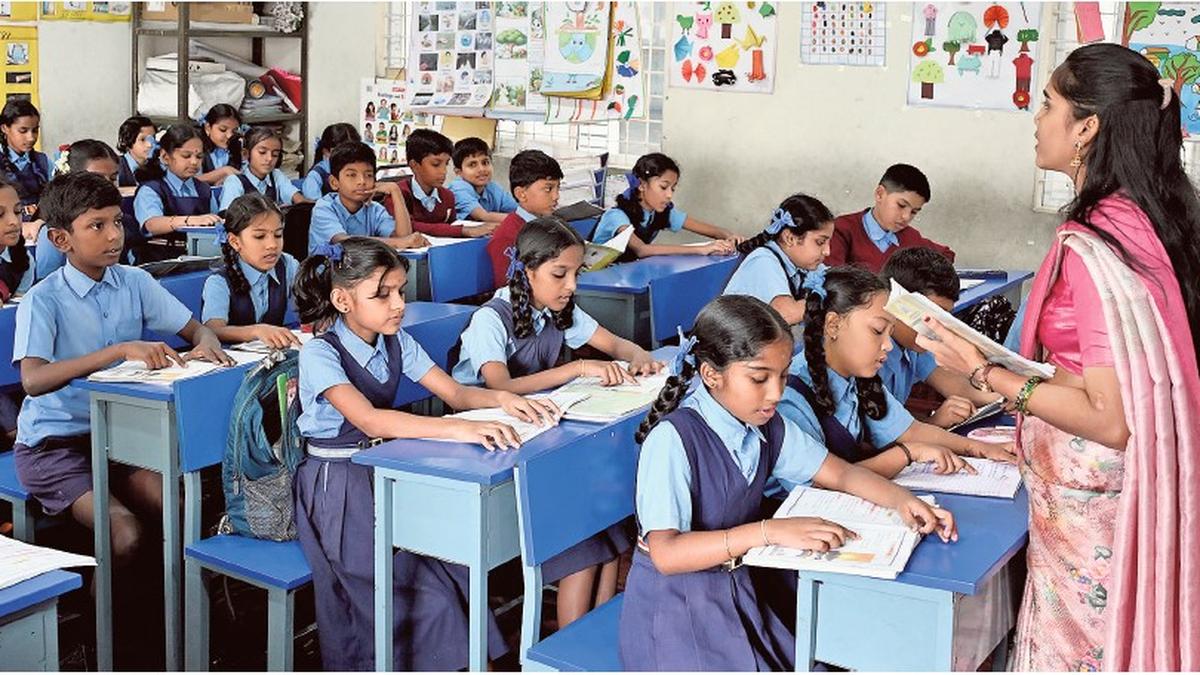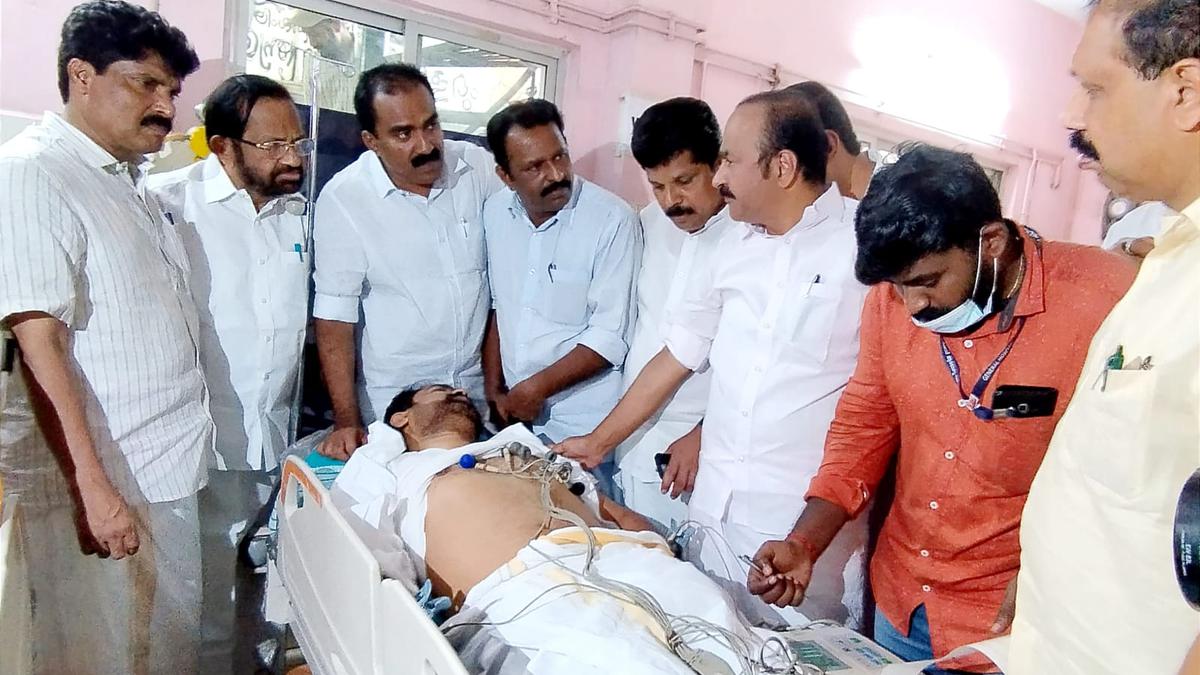Kerala made headlines recently when it became a signatory to the Union government’s flagship PM SHRI (Prime Minister’s Schools for Rising India) scheme after three years of holding out, only to press the pause button after the Communist Party of India (CPI) that is a coalition partner in the Communist Party of India (Marxist)-led Left Democratic Front (LDF) government in the State refused to go along with the decision alleging a lack of consensus.
The scheme was announced by Prime Minister Narendra Modi on National Teachers’ Day in 2022.
On September 7, 2022, the Union Cabinet approved the Centrally sponsored scheme, which seeks to develop over 14,500 existing schools, including Kendriya Vidyalayas (KVs) and Jawahar Navodaya Vidyalayas (JNVs), across the country as model institutions that showcase the National Education Policy (NEP) 2020.
The PM SHRI schools are envisioned to meet the “demands of the 21st century,” notes the scheme’s ‘Framework on school transformation’. With upgraded infrastructure and innovative pedagogy and technology, the schools are meant to create “well-rounded individuals equipped with key 21st century skills”. According to the Union Ministry of Education, the objective of PM SHRI is to ready schools in which “every student feels welcomed and cared for, where a safe and stimulating learning environment exists, where a wide range of learning experiences are offered, and where good physical infrastructure and resources conducive to learning are available to all students.”
The scheme is designed to benefit more than 18 lakh students directly. Mentoring of schools in the vicinity of PM SHRI schools is expected to benefit many more students. The total outlay of the project is ₹27,360 crore (Central share of ₹18,128 crore and State/UT share of ₹9,232 crore in 60:40 pattern), spread over a period of five years till March 2027. The Union government will provide 90% of the funding for northeastern and Himalayan States and the UT of Jammu and Kashmir, and 100% for UTs that do not have legislature. According to the PM SHRI dashboard, 13,070 schools have been selected for the scheme nationwide. Of them, 1,533 are KVs and JNVs.
Only existing elementary and secondary/senior secondary schools managed by the Union/State/UT/local self-governments and having Unified District Information System for Education Plus (UDISE+) code are selected for the scheme.
The selection is done in three stages. First, States or UTs sign a memorandum of understanding (MoU) with the Union government agreeing to implement the provisions of NEP 2020 in “entirety”. Then, schools that meet the minimum benchmark (on the basis of UDISE+ data) are shortlisted.
In the third stage, the shortlisted schools compete to fulfil certain criteria based on the challenge formula. Their claims are verified by States or UTs through physical inspection and a list of schools is recommended to the Union Ministry of Education. A maximum of two schools — one elementary and one secondary/senior secondary — are selected from every block or urban local body. An expert committee recommends the final list of schools selected for PM SHRI in each State or UT.
The MoU for the PM SHRI scheme clearly states that PM SHRI has to be prefixed to name of selected schools. “No change shall be undertaken thereafter, by the States/UTs/KVS/NVS for these schools, as these schools are to be developed as PM SHRI Schools for providing quality education,” it says.
Key features
Pedagogy in PM SHRI schools will be more experiential, holistic, integrated, learner-centred, and flexible, according to the guiding framework. The curriculum can follow the National Curriculum Framework/State Curriculum Framework developed in accordance with the new curricular and pedagogical structure of the NEP.
The schools will use mother tongue/local or regional language for teaching and learning, particularly in the early years.
The gist
Apart from Kerala, West Bengal and Tamil Nadu (all three States ruled by Opposition parties) remain the only States yet to sign up for the scheme
West Bengal’s contention pertains to funding and branding. It asks why name the scheme PM SHRI if States have to bear 40% of the cost and have to take over the schools after five years
Tamil Nadu’s point of conflict is the three-language formula of the NEP
Kerala opposed PM SHRI on the grounds it showcases the NEP which, it says, is being imposed by the Union government as part of an RSS agenda
Student registry to track enrolment and learning progress; STEAM (science, technology, engineering, arts and mathematics) education; sports and arts for every student; ICT facility, smart classrooms and digital libraries, science labs, and vocational labs; and early childhood care and education; competency-based learning and improvement in learning outcomes of each student are some of the significant aspects of PM SHRI schools.
A ‘School Quality Assessment Framework’ that measures the performance of these schools is another key component. The assessment framework will produce comprehensive reports to aid improvement in educational standards. ‘Traditions and practices and Indian knowledge systems’ are part of curriculum in these schools. The framework, it is mentioned, is not prescriptive but suggestive in nature.
Row over PM SHRI
Though PM SHRI was launched in 2022, States such as Delhi, West Bengal, Bihar, Odisha, Tamil Nadu, and Kerala refused to come on board for reasons ranging from political opposition to the NEP and objection to adding the PM SHRI prefix to schools’ name to prioritising their own projects.
Punjab signed the MoU in 2022 but withdrew from it a year later. As in the case of Kerala, withholding of funds under another Centrally sponsored education scheme Samagra Shiksha by the Union government saw the Punjab government ultimately reconsider the decision in 2024. Other States too gradually gave in, with lack of critical funding threatening to derail education schemes.
Apart from Kerala, West Bengal and Tamil Nadu (all three States ruled by Opposition parties) remain the only States yet to sign up for the scheme. West Bengal’s contention pertains to funding and branding. It asks why the scheme should be named PM SHRI if States have to bear 40% of the cost and have to take over the schools after five years. As far as Tamil Nadu is concerned, the point of conflict is the three-language formula of the NEP. This translates to ‘imposition of Hindi’ for the ruling government. Tamil Nadu has chosen to seek legal redress for release of nearly ₹2,200 crore from the Union government.
Kerala, too, opposed PM SHRI on the grounds it showcases the NEP which, it says, is being imposed by the Union government as part of a Rashtriya Swayamsevak Sangh (RSS) agenda that will lead to ‘communalisation of education’ and promote unscientific thinking. The State had once agreed to implement the PM SHRI scheme in 2024, but refrained from signing the MoU.
More than a year later, a decision to throw in the towel was made after the Union government insisted on signing the pact as a precondition for release of pending Samagra Shiksha funds (to the tune of ₹1,158.13 crore).
Kerala tried to defend the move saying there will be no compromise on its educational policy and values. The government’s attempts to walk the tightrope of prioritising the State’s needs while staying true to the ideological opposition to the NEP though ran into a wall of CPI objections, leading to the freeze on the implementation of the scheme. A cabinet subcommittee, which has been formed to scrutinise the MoU, will now take a call on the issue.
Published – November 02, 2025 01:04 am IST





